VERLOOP Is Creating Colorful Lifestyle Products From Leftover Yarn
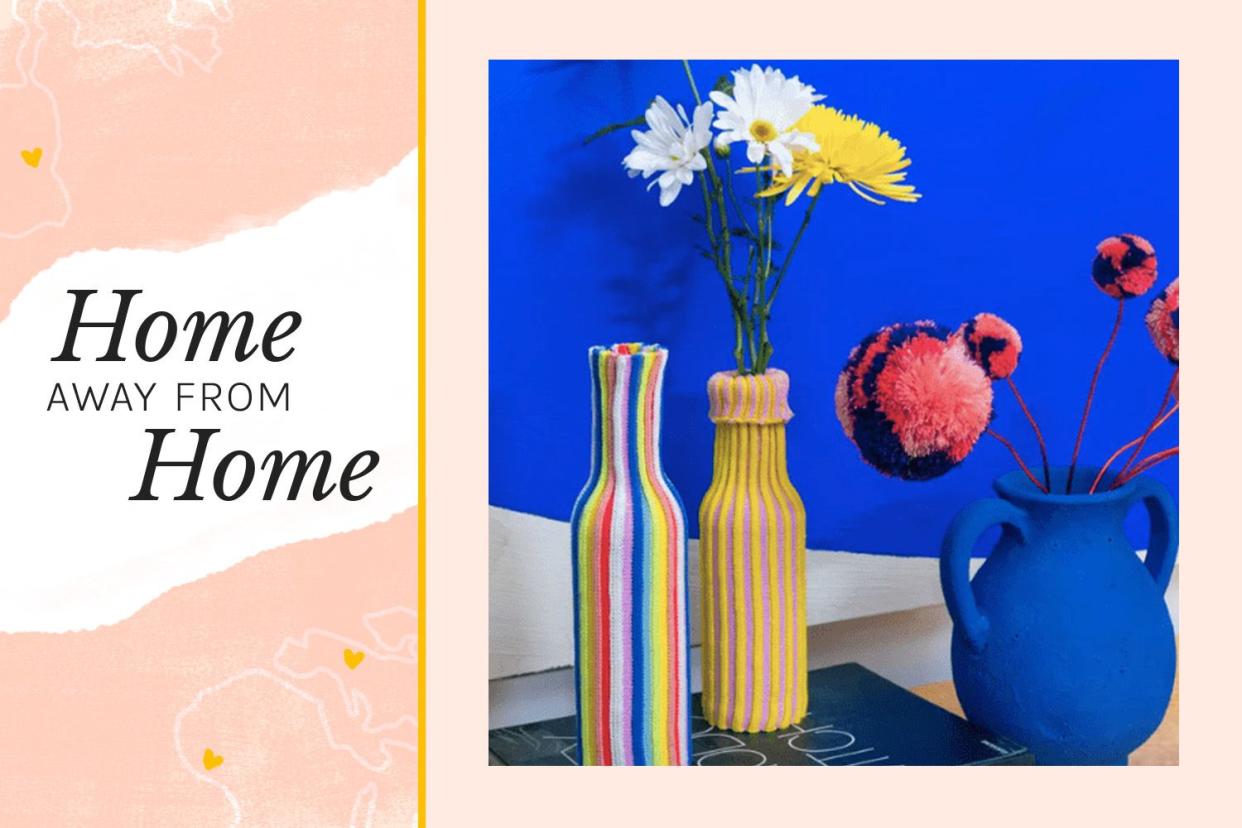
The Spruce / Illustration by Amy Sheehan / VERLOOP
Home Away From Home is a series that spotlights BIPOC brands that are adding a cultural essence to everyday items. This allows anyone to always have a piece of their culture in their own space without ever feeling homesick or out of touch with their roots. We're exploring the stories of the individuals behind the brands that have touched people's hearts through their products and have allowed people to feel at home anywhere.
Faced with how much extra yarn was left over from her family's textile factory, Ella Lim started a side project to put that deadstock material to good use. From throw pillows to bed quilts, Lim created a sustainable and trendsetting lifestyle brand, VERLOOP, to make waves for its color-forward designs that put traditional knitting techniques on display in new ways.
Lim founded VERLOOP back in 2012 after she left a marketing and product design career in New York City to return home to her family’s textile factory in Asia.
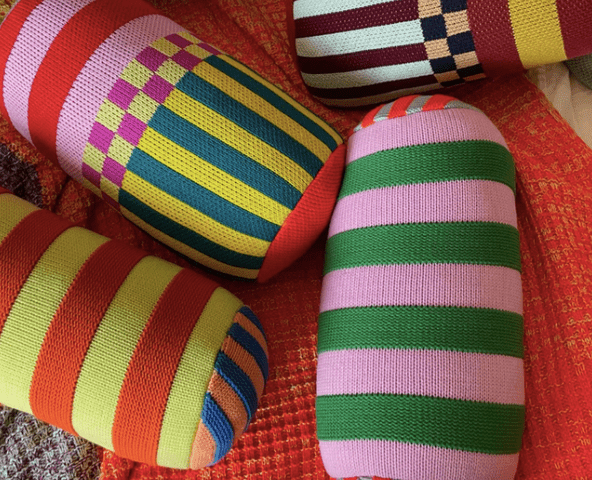
VERLOOP
Designing Through Play
Part of what makes VERLOOP so unique is that it didn’t begin with an idea for a product—it began with a raw material: deadstock yarn.
“In the textiles industry, excess yarn is known as ‘deadstock,'” Lim says, explaining the material that drove her vision for VERLOOP. “Leftovers are inevitable in manufacturing because materials are ordered with a bit of padding—to make sure they don't run out. Sampling and human error add to this.”
What makes deadstock yarn especially interesting and challenging to work with is it’s only available in limited quantities, which forces Lim and others to get creative.
“We have to develop ways to either mix multiple yarns together or create patterns with frequent color changes, like multi-colored stripes," Lim says.
Lim quickly realized that some design styles would work better within these limitations than others. Dutch design, for instance, tends to feature bold colors and simple patterns like checkers or stripes, which worked well.
Want more of our favorite products? Sign up for our free shopping newsletter for our top finds, best sales, and more!
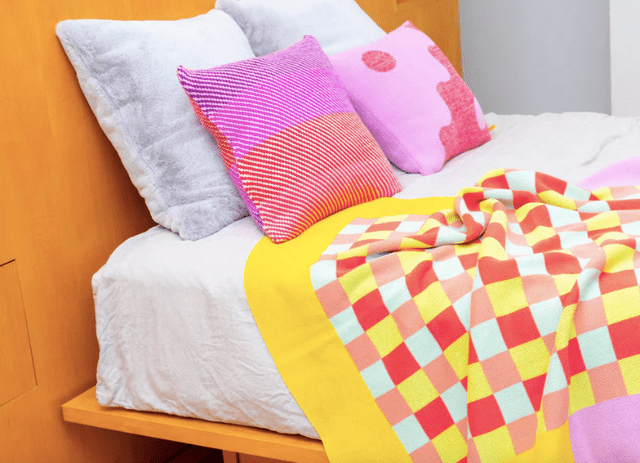
VERLOOP
Going Dutch
Lim explains how before she started the company, she worked and was often inspired by many Dutch designers.
The name VERLOOP comes from a Dutch word, which means process.
"For me, playing off the word ‘loop’—which is often present in Dutch words—felt right," Lim says. "A loop is essentially the building block of knitting. A word meaning ‘process’ also seemed fitting for a project that was experimental and open-ended.''”
Once the name was decided, Lim began designing and was drawn to Dutch design’s playfulness and modernity. She was also inspired by its penchant for unique color combos, such as orange and blue, and decided to make those a part of VERLOOP's aesthetic as well.
Today, the VERLOOP collection is filled with items like quilts, bolster pillows, and slippers showcasing modern Dutch motifs such as bold patterns like 1970s florals, grid-works, checkers, and op art-style illusions.
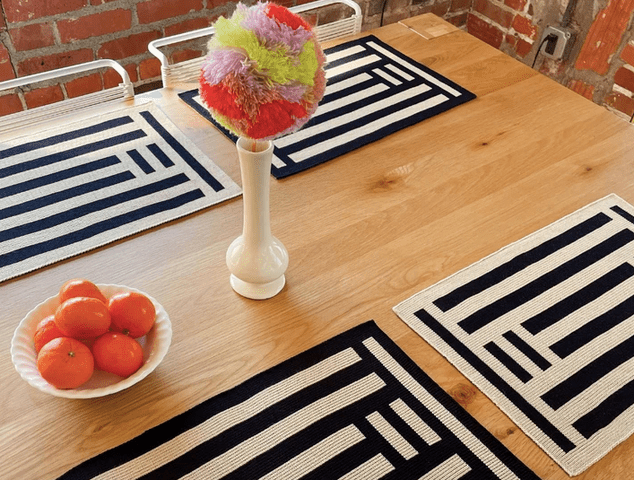
VERLOOP
Constant Evolution
The first items to roll off the assembly line were cold-weather gloves because the factory originally specialized in knit gloves. After launching some more cold accessories like scarves and hats, they soon made the transition to launch bags and slippers a few years later.
Customers loved the slippers which inspired the team to create more items for the home space. “We found that people really want to have color and pattern not only to wear but to live with,” Lim says.
As the brand’s product line evolved, so too did its influences. Branching out from the purely Dutch aesthetic, the VERLOOP team began to incorporate inspiration from designers like the Campana Brothers and Gaetano Pesce, an experimental Italian architect.
Design styles like the Memphis movement, a 1980s movement that started in Italy and is best known for its use of loud color and bold, simple shapes also entered the brand’s design lexicon.
“We admire a lot of the furniture of the industrialist designers who repurposed humble, everyday materials in improvisational, elevated ways,” Lim says.
Currently, the brand’s product catalog is expansive. The lineup goes beyond basic home items like pillows and throws and includes doormats, placemats, and coasters.
One of the newest items to join the assortment—bottle covers—even aims to turn non-decor items (like reusable water bottles) into dinner party-ready centerpieces.
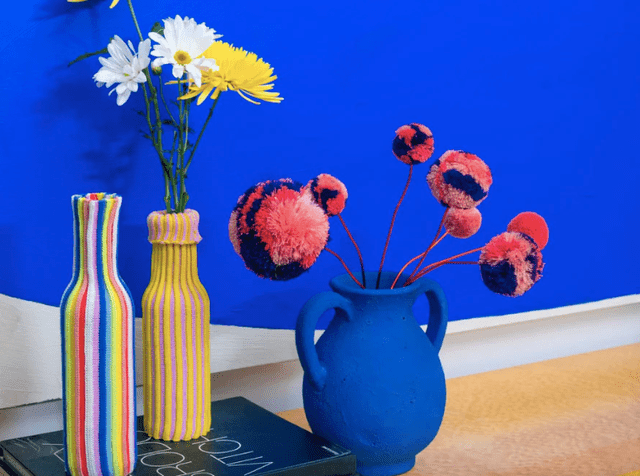
VERLOOP
Honoring the Filipino Tradition
For Lim, one of the most meaningful parts of VERLOOP is the opportunity it gives her to work with the craftspeople of her native country, the Philippines.
“Designing alongside our factory team is so fulfilling,” Lim says. “They’ve been honing their skills for decades, and now they can use them in creative, conceptual ways.”
Another way Filipino tradition makes an appearance in VERLOOP is its bold use of color.
“Filipino craft traditions tend to be colorful, unexpected, and playful—so it’s no surprise VERLOOP is too," Lim says.
And while sustainability is a hallmark of VERLOOP, Lim notes that resourcefulness, and making use of what’s available, is actually a long-held trait of the Filipino ethos. In essence, transforming cast-off material into something new and functional isn’t just sustainable—it’s also intrinsically Filipino.
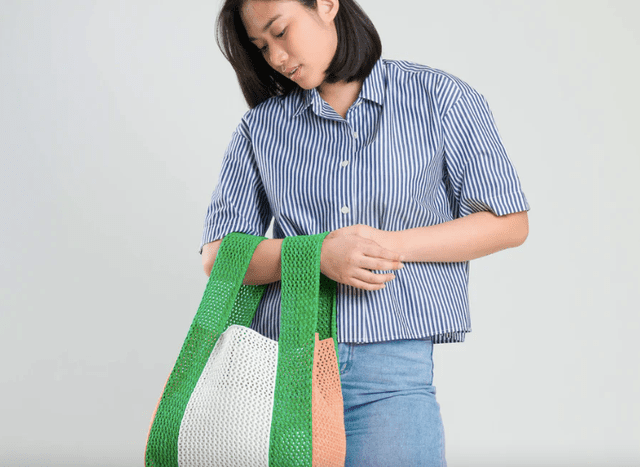
VERLOOP
What Lies Ahead
So what happens when VERLOOP grows beyond its deadstock yarn supply? For one, the brand remains committed to not creating excess waste themselves.
“Our ribbed slippers are seamlessly knit so that there’s no material cut away after knitting,” Lim says. “Our poms are made with deadstock yarn on a special machine that allows us to shape them with minimal trimming.”
They’re also looking beyond Lim’s family factory for deadstock by partnering with outside sources. This will help others reduce waste and bring new deadstock materials into their creative fold, Lim says.
But perhaps best of all, VERLOOP’s reverse-engineered design process has caught the attention of other brands.
“For other designers, I think we show them that experimentation and using unexpected materials is worth it,” Lim says. “Designing this way takes longer, but what you end up with is so rewarding.”
Read Next: Anthropologie's Newest Collaboration With Kemi Telford Vibrantly Celebrates Self-Love
Read the original article on The Spruce.

